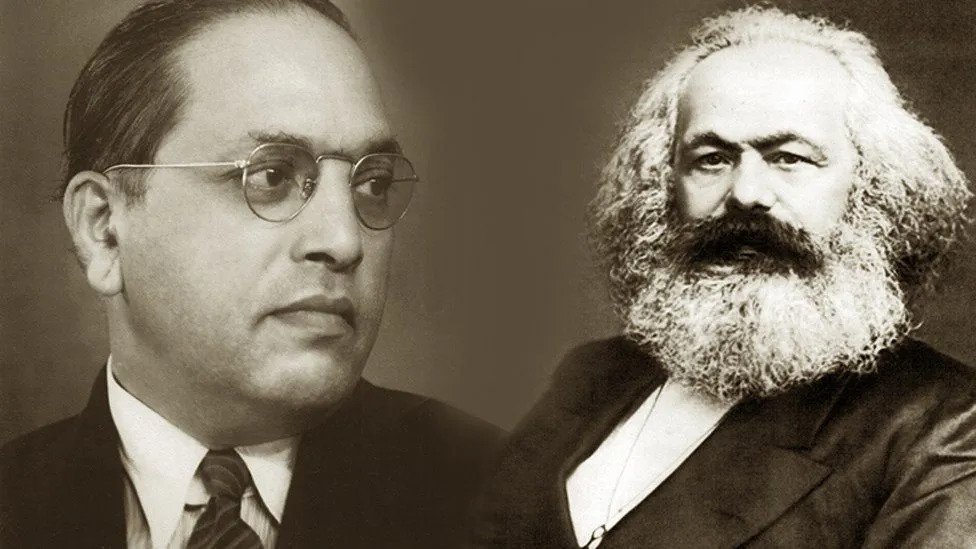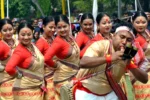By: Arup Saikia
When did the people of Assam start to think “Sense of Assamese”? How people of Assam has got this feeling? Actually, who are Assamese? Who is the modern architect of Assam?
Undoubtedly, fifteen-century scholar saint, Sankardev is the architect of great Assam and its people. Now, many problems also swirling around Sankardev itself regarding his legacy and ideology. So far, we know Sankardev hasn’t entrusted his legacy to anyone individually or socially. Sankardev’s many wandering locations during his lifetime signify his deep-rooted grip or influence on the people of medieval big Assam. Monarchs of two great communities (Koch and Ahom) of that period initially feared Sankardev as a threat to their monarchy for proselyting their subjects to his religion of monotheism or equality. Classification or casteism of society is one kind of governing tool to rule people of that time. Traditional religious masters – Brahmins are threatened for their survivability as religious practitioners because Sankardev’s newly emerged Eksarana (monotheism) had ruined many age-old religious practices of their interest. Therefore, Sankardev has no lack of conspirators. Nonetheless, during his long life span, Sankardev was capable of gaining patronage from Ahom and Koch monarchs in part besides some wealthy chieftains from time to time.
Almost in the past hundred years, many SANKARI organizations have been surfacing (organizations, in the name of Sankardev) ostensibly to preserve his religion and ideology. His ideology and religion they paint in different colours whatever suits these organizations.
Another section of people directly not followers of Sankardev’s monotheism, but practiced his religious verses or celebrating cultural creation i.e., Bhaona (traditional drama), Nam (different types of musical prayers), Sattriya (dances), etc. These people subsequently began to feel alienated and a distrustful situation arises towards Sankari organizations for their narrow outlook. But the creation of Sankardev should not be confined itself to the formation of the Assamese community only. Conscience reasoning research is required about Sankardev to project him as a national icon with many more still unseen qualities.
But out of bigotry or for exaggerated support for Sankardev, nobody also should say Sankardev is the sole father of the Assamese community. Sankardev hadn’t built the Assamese race in the air. As he acknowledged the talent of prior poetic genius Madhab Kondoli. That way some groundwork was also under process to place bricks of the Assamese race before his birth. Medieval nationalism during the era of Sankardev came into existence only based on previously available ingredients. Otherwise, maybe the sense of Assamese nationalism would have been obscure for them. An inspirational force of Assamese nationalism was not completely indigenous; it was also a stream of pan-Indian bhakti (devotion) movement. The Bhakti movement simplified the complex worshipping procedure of the Hindu religion by incorporating social reformation. Much of the success of Bhakti or devotional movement was caused by commodity production also. Strict classification of ancient society has been diminished gradually for the expansion of business and commodity production. For the continuation of a convenient barter system due to lack of currency, area wise some locations are developed with socio-economic significance. Later Bhakti movement catalyzed to grow to own the language and culture of respective communities. Many scholars nowadays consider the Bhakti movement as a social event rather than a religious one. Because no incident in Assam in the last two thousand years has caused this much impact on Assamese society, as the Bhakti movement attained influence in all aspects.
Feudal-type society began to grow in Assam at that time. Ahom kingdom was based on paik (workers, fighters, or sometimes indentured labour) system. The most remarkable success of the Bhakti movement was its calibre of influencing all people apart from upper-caste Hindus. The effect on all sections of people contributed to breaking the feudal system, eventually, many paik or workers came to the liberal fold of the Bhakti cult. Which somehow weakened the Ahom monarchy. This way Assamese community was formed comprising the majority of tribal and downtrodden with a privileged class. Later Burmese aggression and successive social disability stagnated Assamese society until the arrival of the British through Yandaboo Treaty on 24th February 1826. Simultaneously with the language movement new Assamese intellectuals like Anandaram Dhekial Phukan, Hem Chandra Baruah, Gunabhiram Baruah, Lakshmi Nath Bezbaruah, Banikanto Kakoti, Kaliram Medhi have immensely contributed to establishing teaching of Sankardev. Many religious books and romantic literary writing circulation started. This period can be termed the second renaissance of Assam. The first one was during the emergence of the Bhakti movement in the 15th century.
Unity or building a country or society isn’t the result of an agreement or official gazette. Society is formed through a continuous process, and for that, we have to create a congenial environment befitting the period of time. Still, this process is going on. It is seen, most Sankari organizations (organizations formed in the name of Sankardev) nowadays take the people of Assam for granted. As if all other people are obligated to follow their dictation in the name of devotion or to accept all their ideologies spontaneously. In very interior villages also even many tribal people pray from KIRTANA (a religious book written in verse by Sankardev) stanza before Deity or in their rituals which is contrary to Sankardev’s monotheism. This is an example of Sankardev’s deep permeation as a cult figure.
Moreover, the people of Assam are ever grateful to tribal Koch king Nara Narayana for sheltering and patronizing Sankardev mainly later part of his life. Likewise, the contribution of immigrant Ahom monarchs can’t be ignored for wholeheartedly accepting Assam as their motherland abnegating a major part of the language and culture they got by birth. Importantly no community or kingdom single-handedly can take credit for promoting or to help flourish Sankardev’s culture and religion.
Present aspects of Sankardev: For the growth of unnecessary egotism among some monotheistic communities, some imaginary thoughts and rituals are tried to impose on other people on behalf of Sankardev. Which has no trustworthy evidence that Sankardev ever preached or practiced these rules. Sankardev’s main disciples are from all communities of Assam with different socio-religious backgrounds. Although animosity between Sankardev and some Brahmins are well known, he clearly understood one thing without the effort of Brahmins, lakhs of tribes and some non-religious people wouldn’t have been converted to Hindu religion as idol worshipper, tantricism or shaktism (as a whole like magical mysticism). And without their previous conversion, Sankardev wouldn’t have got a platform to preach his ideology to the bulk of people. During the time of Sankardev and afterward, of course, many Brahmins lost religious sincerity to a greater extent.
Later Islamic Sufi saint Azan Fakir came to Assam from Baghdad in 1630. He preached reformed Islam along the line of the Bhakti movement and unified many people, Hindus even converted. Due to the rise of his popularity, Azan Fakir earned the wrath of the Ahom monarch and punished him, but later king apologized to him. He is popular for his devotional songs, ZIKIR and ZARI created from Assamese musical tradition. Moreover, Fakir’s songs have notable similarities with Borgeet’s (devotional song) of Sankardev.
Sankardev in reality: Sankardev’s spiritual leadership image or religious reformation he had initiated was only one part of his multiple missions contrary to the thinking of the majority Assamese. Being a father of the Assamese renaissance, He was an Assamese polymath like the hero of the European renaissance Francesco Petrarca, Michelangelo, and Leonardo da Vinci. Sankardev is a playwright, sportsman, music maestro, etc. Therefore, organizations created in his memory should be sports or drama training institutes or musical enterprises, etc. removing the religious tag. The more people regard Sankardev as a religious leader, the more Assam people will be out of harmony.
Finally birth of the Assamese renaissance was not in a watertight compartment, it was like an umbrella held by Sankardev with innumerable ethnic sticks of equal importance. (The author is an alumnus of Delhi University, and also a noted cultural activist, actor, scriptwriter, and poet. He can be reached at arupsaikia07@gmail.com)







